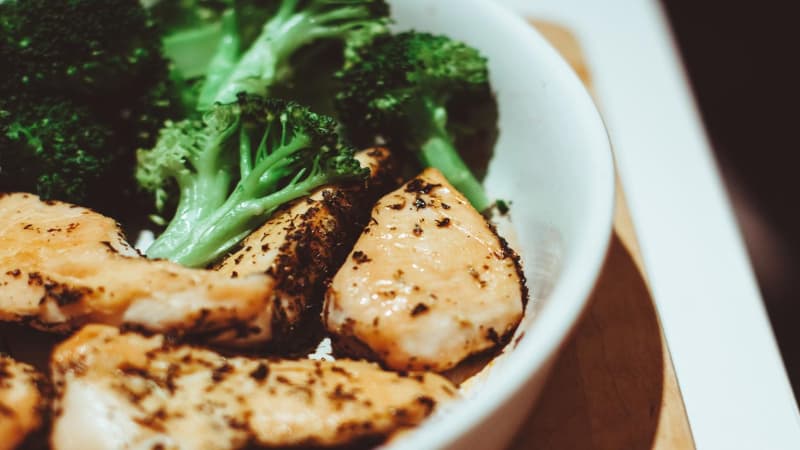When it comes to snacking, I’m always on the lookout for healthier options that still satisfy my sweet tooth. Sugar-free fruit snacks have become a popular choice, promising the fruity flavors we love without the guilt. But are these treats really as healthy as they seem?
As I dive into the world of sugar-free snacks, I can’t help but wonder what’s really going into these products. Are they packed with artificial ingredients or do they offer genuine health benefits? Join me as I explore the truth behind sugar-free fruit snacks and discover whether they’re a smart addition to our diets or just another marketing gimmick.
Overview of Sugar-Free Fruit Snacks
Sugar-free fruit snacks appeal to health-conscious individuals and those avoiding added sugars. These snacks often feature fruit purees or extracts and replace sugar with sweeteners like stevia, erythritol, or monk fruit. I find it fascinating how these alternatives aim to satisfy sweet cravings without impacting blood sugar levels significantly.
Many brands tout their sugar-free options as healthier, but it’s essential to delve deeper. I often check the ingredient list for artificial additives that some manufacturers include to enhance flavor or texture. Natural fruit flavors and colors usually indicate a cleaner product.
Moreover, I encourage readers to consider the overall nutritional profile. Fiber content, vitamins, and minerals can vary widely among products. Not all sugar-free fruit snacks offer the same health benefits—some might skimp on nutrients while focusing solely on sweetness.
When selecting sugar-free fruit snacks, I recommend looking for those with minimal processing. Whole fruit ingredients typically provide more health benefits compared to heavily processed options. Checking for certifications like non-GMO or organic can add another layer of reassurance.
Ultimately, while sugar-free fruit snacks provide a viable alternative to traditional sweet treats, assessing their healthfulness involves examining ingredients, nutrients, and processing methods.
Ingredients Used in Sugar-Free Fruit Snacks
When exploring sugar-free fruit snacks, understanding the ingredients is crucial for making healthy choices. Many snacks leverage alternative sweeteners to keep the taste appealing while avoiding sugar.
Common Sweeteners
I often find brands using sweeteners like stevia, erythritol, or monk fruit in their recipes.
- Stevia: A natural sweetener derived from the Stevia plant, stevia offers sweetness without calories. It doesn’t impact blood sugar levels, making it a popular choice for those managing diabetes.
- Erythritol: This sugar alcohol provides sweetness with minimal calories and doesn’t spike blood sugar. It’s often blended with other sweeteners for a more balanced taste.
- Monk fruit: Extracted from monk fruit, this sweetener is calorie-free and 100-250 times sweeter than sugar. Its natural origin appeals to health-conscious snackers.
These alternatives can make sugar-free snacks taste satisfying, but it’s essential to check for additional ingredients that may accompany them.
Nutritional Content
The nutritional profile of sugar-free fruit snacks varies widely. While some brands offer decent fiber, vitamins, and minerals, others may lack essential nutrients.
- Fiber content: Many fruit snacks contain added fiber, such as inulin or psyllium husk, which can aid digestion and enhance satiety.
- Vitamins and minerals: Whole fruit ingredients often retain nutrients like vitamin C and potassium, crucial for overall health. Look for snacks that use pureed or concentrated fruit to maximize these benefits.
- Caloric value: Despite being sugar-free, the calorie content can still be high depending on added oils or fillers. Check the serving size to ensure it fits your dietary needs.
By scrutinizing ingredient lists and the overall nutritional content, I maintain transparency in my snack choices and advocate for fellow health enthusiasts to do the same.
Health Benefits of Sugar-Free Fruit Snacks
Sugar-free fruit snacks offer several health benefits that appeal to those seeking healthier alternatives. These snacks can be both delicious and nutritious, especially when crafted with quality ingredients.
Weight Management
Sugar-free fruit snacks serve as a fantastic option for weight management. Since they contain little to no added sugars, they provide fewer calories than traditional fruit snacks. For example, a typical serving of sugar-free fruit snacks can contain about 30-50 calories, compared to 100-150 calories in their sugary counterparts. These lower-calorie snacks can satisfy cravings without derailing dietary goals. I’ve seen many people successfully incorporate sugar-free snacks into their weight loss plans while still enjoying sweet flavors without guilt.
Dental Health
Choosing sugar-free fruit snacks also supports dental health. Sugary snacks contribute to tooth decay, as oral bacteria feed on sugar and produce acids that harm teeth. In contrast, sugar-free versions leverage sweeteners like stevia or monk fruit, which don’t promote tooth decay. This means children and adults alike can enjoy tasty snacks while minimizing the risk of cavities. The emphasis on using healthy sweeteners ensures that maintaining oral hygiene becomes much easier, allowing us to indulge without compromising our smiles.
Potential Drawbacks to Consider
While sugar-free fruit snacks seem like an appealing alternative, it’s crucial to weigh potential drawbacks.
Unknown Long-Term Effects
The long-term health effects of consuming sugar-free snacks remain uncertain. Some sweeteners, despite being labeled as natural, might interact differently with our bodies over time. Stevia, erythritol, and monk fruit have short-term studies supporting their safety, yet more extensive research is necessary to understand their long-term impact on health. I encourage readers to stay informed about emerging studies that may provide insights into how these sweeteners affect metabolism and overall wellness.
Impact on Blood Sugar Levels
While sugar-free snacks often claim to have minimal impact on blood sugar, individual responses can vary. People with different metabolic rates may experience distinct effects, despite using the same snack. For some, certain sweeteners can trigger insulin responses or cravings for more sweets. I recommend monitoring how your body reacts after consuming these snacks, as it helps you make informed choices regarding your snacking habits. Understanding your unique response will guide you in selecting snacks that align with your health goals.
Conclusion
Navigating the world of sugar-free fruit snacks can be a bit tricky but also rewarding. I’ve learned that while these snacks can be a great alternative for satisfying cravings they aren’t all created equal. It’s essential to read those ingredient lists and nutritional labels carefully to ensure I’m making the healthiest choices.
I appreciate the variety of sweeteners available that allow me to enjoy a treat without the sugar crash. However I also keep in mind that my body might react differently to these alternatives. By staying informed and listening to my own needs I can enjoy these snacks while still prioritizing my health. So here’s to finding the right balance and indulging wisely!
















